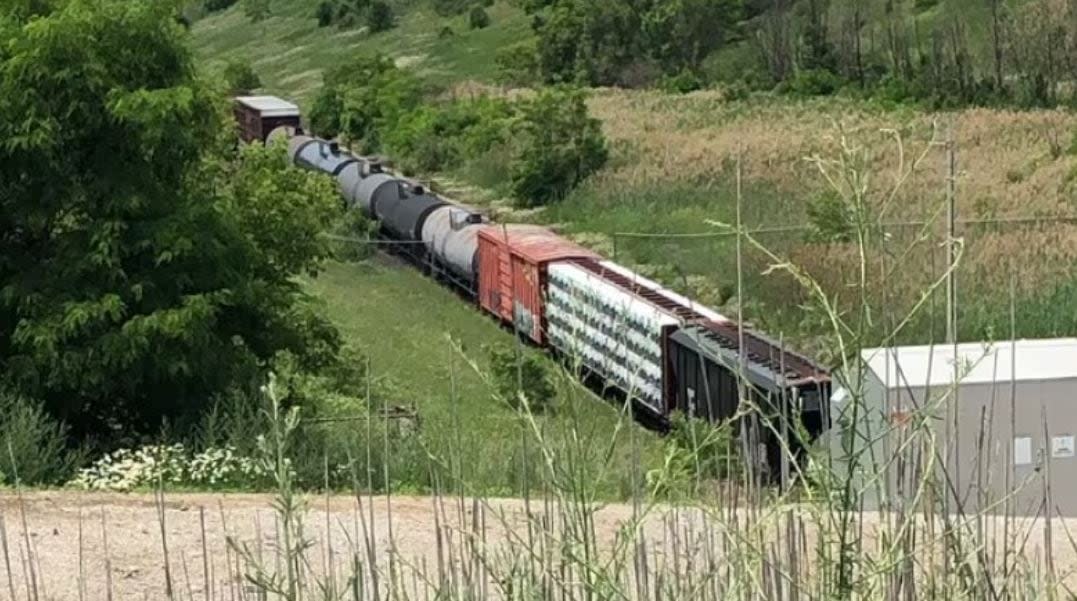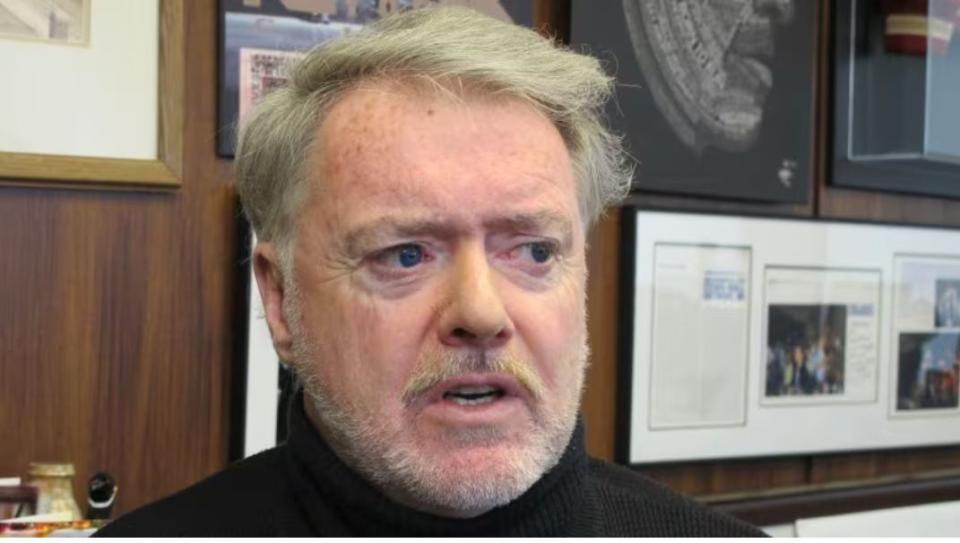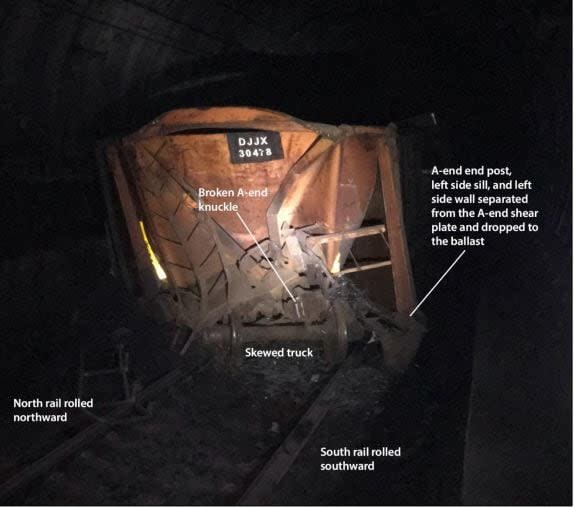TSB report reveals cause of 2019 derailment in tunnel between Port Huron and Sarnia

It was a structural defect in a freight car that caused the derailment of a CN freight train in the tunnel between Sarnia and Port Huron in 2019, according to a new report.
The derailment occurred on June 28, 2019, on the Port Huron side of the tunnel when a car collapsed under the weight of its scrap metal load and derailed the train, resulting in the spillage of about 52,000 litres of sulphuric acid from elsewhere on the train. No one was hurt.
The car was built in 1978 and modified to carry scrap metal in 2012. But the report released Tuesday by the Transportation Safety Board of Canada said the car "had a number of pre-existing defects that contributed to its reduced structural integrity."
"Visual examination determined that the defects were not recent but had developed over a period of time," the report found.

Sarnia Mayor Mike Bradley finds the report by the TSB on the derailment alarming. (CBC News)
Sarnia Mayor Mike Bradley said rail safety should be a concern "because the rail lines run through the heart of our communities."
"It's quite disturbing to read the age of the equipment and the lack of upgrades, even though they knew there were issues there," Bradley said in response to the report.
Bradley says he wants the federal government to step up enforcement of safety and inspection regulations of rail companies.
"CN has a job to do and that's moving the rail. They're a big part of this community," he said. "But certainly in this day and age you would expect better, given the history of Canada with rail incidents and tragedy, that this is not acceptable."
But the car was inspected prior to the derailment. According to the TSB, it received 24 certified car inspections and had other pull-by inspections in the three months prior to the derailment, with "no significant structural defects noted."
"Neither the Canadian freight car safety rules, the U.S. freight car safety standards, nor the Association of American Railroads (AAR) Interchange Rules contained limits to identify defects to certain structural components of freight cars, such as those present in the failed gondola car. Thus, the structural defects did not prevent the car from remaining in service," the TSB report states.
After the derailment, the TSB issued four rail safety advisory letters (RSAs) to Transport Canada, two of which were also issued to the U.S. Federal Railroad Administration, suggesting remedial actions to reduce the risks to safety.

A picture of defective bathtub gondola car that caused the derailment. (Transportation Safety Board of Canada)
The TSB report notes that in response to one of the safety advisories, CN installed new alarms in the tunnel's portals to alert employees to toxic gases and created new emergency procedures
A CN spokesperson said that after the derailment, CN modified its inspection process for the type of car that caused the incident.
"CN continuously applies what it learns from incidents and events to advance safety, a core value at CN," said Daniel Salvatore, CN's senior manager for public affairs, incident management and safety in Ontario.
"Following recent instructions from the Association of American Railroads, all cars of this make, model and vintage are now subject to mandatory inspections."
Transport Canada did not respond to a request for comment before the publication deadline.
Occupational and environmental health researcher Jim Brophy blames deregulation for what he says is a lax attitude toward rail safety that can cause incidents like this one.
"We don't have the inspections that we once had," Brophy said. "The inspectors that are there don't issue the orders."


